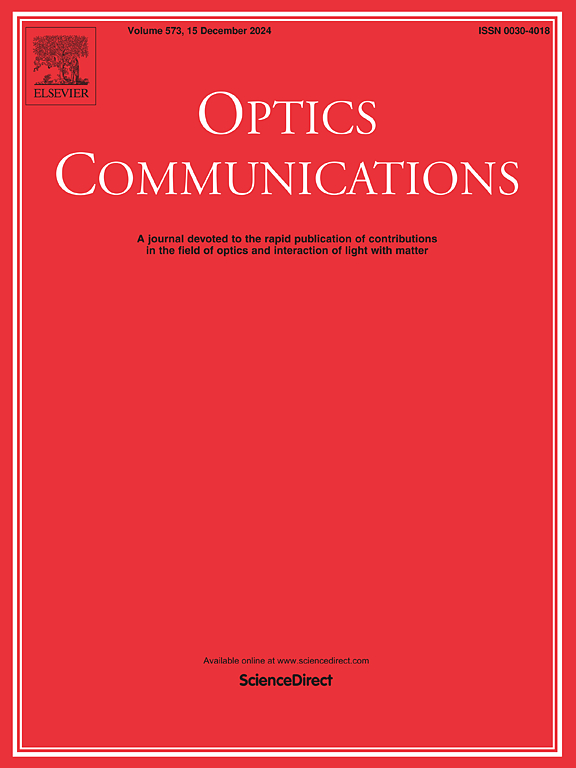Topological supermodes in a specialty periodic tri-lattice optical waveguide
IF 2.2
3区 物理与天体物理
Q2 OPTICS
引用次数: 0
Abstract
Topological photonic waveguides are immensely being investigated owing to the unique features of topology-protected light transmission. Here, we present the signature of topological supermodes in a specialty topological tri-lattice fiber endowed with one-dimensional (1D) periodic lattices. The topological fiber comprises a nontrivial lattice sandwiched between two identical trivial lattices leading to the formation of two interfaces. The presence of two interface states within the same topological bandgap has been observed in the transmission study of the tri-lattice fiber. Moreover, the finite element method-based analysis of the tri-lattice geometry exhibits two identical waveguide modes at two different wavelengths corresponding to the two interface states confined within the nontrivial lattice. The nearly identical propagation constants of the two modes indicate the formation of a supermode in such a periodic waveguide geometry. It is also shown that there are limitations of the fiber geometry for which detectable supermodes exist, and they are robust against a limited amount of local imperfections like layer thickness variation. Such observations intrigue further investigation towards novel topology-based photonic waveguides for strong and secure information transmission in quantum communication.
求助全文
约1分钟内获得全文
求助全文
来源期刊

Optics Communications
物理-光学
CiteScore
5.10
自引率
8.30%
发文量
681
审稿时长
38 days
期刊介绍:
Optics Communications invites original and timely contributions containing new results in various fields of optics and photonics. The journal considers theoretical and experimental research in areas ranging from the fundamental properties of light to technological applications. Topics covered include classical and quantum optics, optical physics and light-matter interactions, lasers, imaging, guided-wave optics and optical information processing. Manuscripts should offer clear evidence of novelty and significance. Papers concentrating on mathematical and computational issues, with limited connection to optics, are not suitable for publication in the Journal. Similarly, small technical advances, or papers concerned only with engineering applications or issues of materials science fall outside the journal scope.
 求助内容:
求助内容: 应助结果提醒方式:
应助结果提醒方式:


